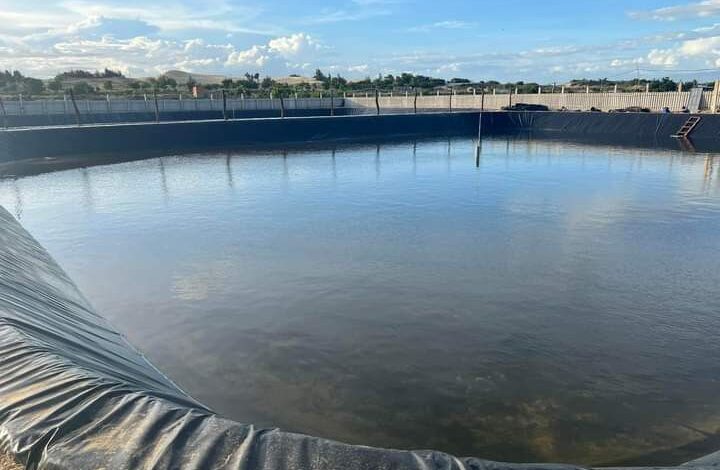Business
Top 10+ Benefits of Pond Lining Sheets Manufacturer
Do you Know Why Pond Lining Sheets are Essential for Water Conservation

Pond lining sheets play a critical role in effective water management and are becoming increasingly popular in industries, agriculture, and even private properties. With the rising need for sustainable water usage and efficient water conservation methods, pond lining sheets offer a cost-effective and reliable solution for creating artificial water bodies, preventing water seepage, and maintaining the integrity of water storage. In this comprehensive article, we will explore the different aspects of pond lining sheets, their benefits, types, and applications.
What are Pond Lining Sheets?
Pond lining sheets, also known as geomembrane liners, are impermeable membranes that are used to line ponds, lakes, and reservoirs to prevent water from seeping into the soil. These sheets act as a protective barrier between the water and the ground, ensuring that water loss due to infiltration is minimized. Pond lining sheets are made from materials like HDPE (High-Density Polyethylene), LDPE (Low-Density Polyethylene), PVC (Polyvinyl Chloride), and other durable polymers, making them strong, flexible, and resistant to environmental degradation.Why Pond Lining Sheets are Essential for Water Conservation
In regions where water scarcity is a concern, every drop of water counts. One of the primary reasons for using pond lining sheets is their ability to prevent water loss through seepage. When ponds or water reservoirs are not lined, water can slowly percolate through the soil, leading to significant water loss over time. By using pond liners, you can ensure that the water remains in the pond for longer periods, which is crucial for irrigation, livestock watering, aquaculture, and recreational uses.Key Benefits of Using Pond Lining Sheets
- Water Retention Pond lining sheets are designed to retain water, making them ideal for water conservation. Whether you’re managing a farm pond or an industrial reservoir, preventing water seepage is essential to maintain adequate water levels.
- Cost-Effective Constructing a pond without a lining sheet can lead to frequent water replenishment and increased operational costs. Pond lining sheets eliminate the need for continuous water refilling, making them a cost-effective solution.
- Easy Installation Modern pond lining sheets are lightweight and easy to install. They can be cut and tailored to fit ponds of any size and shape, which makes the installation process quicker and more efficient.
- Durability Made from robust materials like HDPE and PVC, pond lining sheets are resistant to punctures, UV degradation, and chemical corrosion. This durability ensures that they have a long lifespan, often exceeding 20 years, depending on environmental conditions.
- Environmental Protection Pond lining sheets help prevent soil erosion and groundwater contamination. By creating an impermeable barrier, they keep harmful chemicals, fertilizers, and other pollutants from leaching into the soil or water table.
Types of Pond Lining Sheets
There are several types of pond lining sheets, each offering unique properties that suit different applications. Here are the most commonly used types:HDPE Pond Liners
HDPE (High-Density Polyethylene) pond liners are among the most popular and widely used pond lining materials. They are known for their strength, flexibility, and UV resistance. HDPE liners are perfect for large-scale projects such as agricultural ponds, industrial water containment, and aquaculture farms.PVC Pond Liners
PVC (Polyvinyl Chloride) pond liners are another common type of liner. They are flexible, easy to install, and offer excellent resistance to punctures and tears. PVC liners are suitable for small to medium-sized ponds, including garden ponds, koi ponds, and decorative water features.EPDM Pond Liners
EPDM (Ethylene Propylene Diene Monomer) pond liners are known for their exceptional flexibility and durability. They are often used in applications where irregular pond shapes are required. EPDM liners are also resistant to extreme temperatures and are commonly used in landscaping projects.LDPE Pond Liners
LDPE (Low-Density Polyethylene) pond liners are lighter and more affordable than HDPE liners. Although they are not as durable as HDPE, they are still a reliable option for smaller ponds or temporary water storage solutions.Applications of Pond Lining Sheets
Pond lining sheets are versatile and can be used in a variety of water management projects. Here are some of the key applications:Agricultural Ponds
In agriculture, pond lining sheets are used to store water for irrigation purposes. By preventing seepage, farmers can ensure that water is available when needed for crop irrigation, reducing dependency on external water sources.Aquaculture
Pond lining sheets are widely used in fish farming and aquaculture to maintain clean water environments. The liners prevent contamination from soil and reduce the need for frequent water changes, creating an optimal habitat for fish and other aquatic species.Industrial Water Storage
Many industries rely on pond lining sheets to create large reservoirs for storing water or other liquids. These liners help industries maintain a steady supply of water for cooling, processing, and waste management purposes.Recreational Ponds
Pond lining sheets are often used in the creation of artificial lakes, golf course water features, and recreational ponds. By lining the pond, water levels can be maintained, ensuring the aesthetic appeal and functionality of the water feature.Factors to Consider When Choosing Pond Lining Sheets
When selecting a pond lining sheet, there are several factors to take into account to ensure that the liner meets your specific requirements:- Material Durability Choose a pond lining sheet made from a material that offers long-term durability. HDPE liners, for example, are highly durable and resistant to environmental stress, making them ideal for large-scale projects.
- Thickness The thickness of the liner will determine its puncture resistance. For large ponds or ponds that will house aquatic life, a thicker liner is recommended to ensure that it withstands wear and tear.
- Flexibility Depending on the shape and design of your pond, you may need a flexible liner like EPDM to accommodate curves and irregular shapes. This ensures a smooth and seamless installation.
- Environmental Resistance Consider whether the liner will be exposed to UV radiation, chemicals, or extreme weather conditions. Some liners, like HDPE, are better suited to handle harsh environmental factors without degrading.
Maintenance of Pond Lining Sheets
Although pond lining sheets are designed to be low-maintenance, regular inspection and upkeep are necessary to prolong their lifespan. Here are some tips for maintaining pond lining sheets:- Check for Punctures: Regularly inspect the liner for any punctures or tears, especially after extreme weather events. Repair any damage immediately to prevent water loss.
- Clean the Liner: Keep the liner free from debris, sediment, and algae buildup. This will not only improve water quality but also protect the liner from degradation.
- Monitor Water Levels: Regularly monitor water levels to ensure that there is no significant seepage or leakage.





